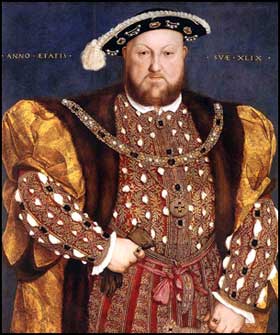Hi guys,
These are the instructions for your homework:
1. Read the poem "If"
2. Does this word mean an affirmative answer or a condition?
3. What is the tense of the verb in the "If" sentence?
4. There are two sentences, one: If you can talk with crowds and keep your virtue.......
which is the second sentence?
5. What is the poem about?
miércoles, 30 de marzo de 2011
sábado, 26 de marzo de 2011
The Schedule
This information is for all my students:
HORARIO | GRUPO | LABORATORIO | FECHA |
8:40 – 9:30 | 410 - A | 2 | 28 – MARZO – 11 |
11:10 – 12:00 | 405 - A | 2 | 28 MARZO 11 |
10:20 – 11:10 | 402 - A | 2 | 30 MARZO – 11 |
9:30 – 10:20 | 501 - A | 1 | 01 – ABRIL - 11 |
viernes, 18 de marzo de 2011
St. Patrick´s reading for 4th. grade
Please, read the text and ask 10 questions:
St. Patrick, the patron saint of Ireland, is one of Christianity’s most recognizable figures. But for all his celebrity, his life remains something of a mystery.
It is known that St. Patrick was born in Britain to wealthy parents, either toward the end of the fourth century or the beginning of the fifth. Although his father was a Christian deacon, there is no evidence that Patrick was particularly religious. At the age of sixteen, Patrick was taken prisoner by a group of Irish raiders who were attacking his family’s estate. They transported him to Ireland where he spent six years as a slave in captivity. (There is some dispute over where this took place. Although many believe he was taken to live in Mount Slemish in County Antrim, it is more likely that he was held in County Mayo near Killala.) During this time, he worked as a shepherd, outdoors and away from people. Lonely and afraid, he turned to his religion for solace, becoming a devout Christian.
After more than six years as a prisoner, Patrick escaped. According to his writing, God’s voice spoke to him in a dream, telling him it was time to leave Ireland. To do so, Patrick walked nearly 200 miles from County Mayo to the Irish coast.
After more than six years as a prisoner, Patrick escaped. According to his writing, God’s voice spoke to him in a dream, telling him it was time to leave Ireland. To do so, Patrick walked nearly 200 miles from County Mayo to the Irish coast.
On his return to his family in Britain, Patrick reported that he experienced a second revelation—an angel in a dream told him to return to Ireland as a missionary. Soon after, Patrick began religious training, a course of study that lasted more than fifteen years. After his ordination as a priest, he was sent to Ireland with a dual mission: to minister to the few Christians already living in Ireland and to begin to convert the Irish.
Familiar with the Irish language and culture, Patrick chose to incorporate traditional ritual into his lessons of Christianity instead of attempting to eradicate native Irish beliefs. For instance, he used bonfires to celebrate Easter since the Irish were used to honoring their gods with fire. He superimposed a sun, a powerful Irish symbol, onto the Christian cross to create what is now called a Celtic cross, so that veneration of the symbol would seem more natural to the Irish, and used the three-leaved shamrock to explain the concept of the Holy Trinity. There is also the legend that he drove the snake from Ireland, although scientists are now certain that there never were snakes on the island; some scholars have argued that the snakes were symbolic of Druids.
St. Patrick’s Day, March 17th is believed to be the date of Patrick’s death, although there is some doubt, most recent evidence points to 493 AD as the year. Patrick’s spectacular success in converting Ireland from a pagan to a Christian land, as well as the body of legend that developed around his work have ensured that he is commemorated in Ireland and wherever Irish immigrants have settled throughout the world—from Boston to Singapore.
Familiar with the Irish language and culture, Patrick chose to incorporate traditional ritual into his lessons of Christianity instead of attempting to eradicate native Irish beliefs. For instance, he used bonfires to celebrate Easter since the Irish were used to honoring their gods with fire. He superimposed a sun, a powerful Irish symbol, onto the Christian cross to create what is now called a Celtic cross, so that veneration of the symbol would seem more natural to the Irish, and used the three-leaved shamrock to explain the concept of the Holy Trinity. There is also the legend that he drove the snake from Ireland, although scientists are now certain that there never were snakes on the island; some scholars have argued that the snakes were symbolic of Druids.
St. Patrick’s Day, March 17th is believed to be the date of Patrick’s death, although there is some doubt, most recent evidence points to 493 AD as the year. Patrick’s spectacular success in converting Ireland from a pagan to a Christian land, as well as the body of legend that developed around his work have ensured that he is commemorated in Ireland and wherever Irish immigrants have settled throughout the world—from Boston to Singapore.
miércoles, 16 de marzo de 2011
4th. Grade students
Hi guys,
please, visit this address and learn as much as you can about St. Patrick´s Day.
Next Friday, in class, I will ask you some questions.
Enjoy wearing green clothes today!!
See you
Guadalupe
http://www.history.com/topics/st-patricks-day
please, visit this address and learn as much as you can about St. Patrick´s Day.
Next Friday, in class, I will ask you some questions.
Enjoy wearing green clothes today!!
See you
Guadalupe
http://www.history.com/topics/st-patricks-day
sábado, 5 de marzo de 2011
IV GRADE - MARCH 7TH. HOMEWORK
Hi,
Please, answer the following questions:
1. How many types of verbs are there in English? Which are they?
2. How do the regular verbs form their past?
3. How do the irregular verbs form their past?
4. Which auxiliary do you need to ask questions in past?
5. Write 20 regular verbs
6. Write 20 irregular verbs
7. Write 5 affirmative sentences in past
8. Write 5 negative sentences in past
9. Write 5 questions in past
10. Write your biography in 5 sentences
Please, answer the following questions:
1. How many types of verbs are there in English? Which are they?
2. How do the regular verbs form their past?
3. How do the irregular verbs form their past?
4. Which auxiliary do you need to ask questions in past?
5. Write 20 regular verbs
6. Write 20 irregular verbs
7. Write 5 affirmative sentences in past
8. Write 5 negative sentences in past
9. Write 5 questions in past
10. Write your biography in 5 sentences
Suscribirse a:
Entradas (Atom)


